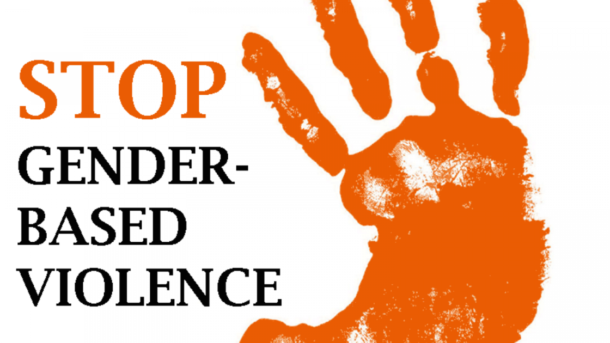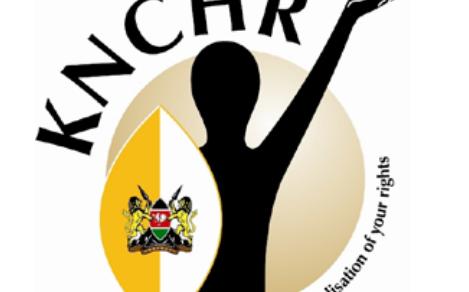GATURA. (E).WAMERU
Gender-based violence means violence meted out against a person based on their gender1 and is one of the most persistent violations of human rights across the globe2. It leads to physical, sexual or psychological suffering for the victim. In Kenya, it is estimated that 1 out of 3 women has experienced gender-based violence before the age of 183, and between 39% and 47% of Kenyan women experience GBV in their lifetime4. The Gender Violence Recovery Centre and Kenya Demographic and Health Survey show that men are the main perpetrators of gender-based violence5 but in the recent past, cases of domestic violence against men have been on the rise meaning that women are also perpetrators of gender-based violence. A study by Kenya Violence against children showed that 1 in every 5 Kenyan males have experienced sexual violence before the age of 18 years and as of 20136, a study by Maendeleo ya Wanaume showed that 2.1 Million men were victims of gender-based violence7. It is important to know that Kenya is a highly patriarchal society and Africa in general makes it hard for men to report abuse and where they do the cases are not taken seriously to the point of being shamed. Also, the language of the sexual offences Act and Penal code of Kenya is large to be blamed because they both use discriminatory language against the male sex yet women can also be perpetrators of sexual violence.
Gender-based violence is associated with physical violence but it can also be manifested in other non-physical forms such as but not limited to, emotional abuse, socio-economic violence, verbal violence including hate speech, sexual harassment and abuse, forced marriages, female genital mutilation, forced abortion and sterilization. 8In reality, some or a combination of all these types
1 United Nations report on Gender-Based Violence against women in Kenya
2 https://www.unhcr.org/gender-based-violence.html
3 Kenya Violence against children 2010
4 The gender violence recovery Centre website
5 ibid
6 Kenya Violence against children 2010
7 The gender violence recovery Centre website
8 ibid
can be present at the same time, especially in abusive intimate relationships. These forms of gender-based violence can occur both in the public sphere, perpetrated by unknown people, organizations, institutions and the state and in the private sphere in families and intimate relationships and that is why in 2015 the Parliament of Kenya enacted the Protection Against Domestic Violence Act No. 2 of 20159
INVESTIGATION AND PROSECUTION OF GENDER-BASED VIOLENCE CASES
In Kenya one of the greatest challenges in addressing gender-based violence is ineffective law enforcement where the Kenyan government’s response to gender-based violence cases through its agencies such as the Kenya Police Service, Office of the Director of Public Prosecutions and Judiciary is slow and sometimes non-existent. Victims and survivors of gender-based violence lack access to comprehensive, quality and timely medical treatment; mental health care and protection services; financial assistance; and to properly investigate and prosecute these cases. 10
Victims of gender-based violence do not report the abuse to the authorities for fear of inaction, ridicule or being asked to pay bribes by local enforcement. Those who report the abuse are met with inadequate responses by the Kenya Police Service due to corruption, lack of capacity to conduct investigations and interference including mishandling evidence11. Where the cases are investigated and prosecuted, inadequate access to legal services and the prosecutors handling these cases are burdened with so many cases due to the backlog of cases facing the judiciary, lack of specialized courts dealing with gender-based violence matters hence paying little or no attention to the plight of the victims and some judicial officers being open to collecting bribes from the accused persons to have the cases derailed, evidence tampered with and files disappeared further frustrate the fight against gender-based violence in Kenya. In some cases, prosecutors fail to adequately involve the victims and their families in the very important proceedings, especially when coming up with the victim impact statement produced by probation officers in proceedings. These challenges are still there despite guidelines for police, specialized medical staff and judicial officers to deal and dispense with Gender-based violence matters expeditiously and effectively
9 Protection against domestic violence Act No. 2 of 2015
10 https://www.hrw.org/report/2021/09/21/i-had-nowhere-go/violence-against-women-and-girls-during-covid-19- pandemic-kenya
11 ibid
having been put in place by the government of Kenya.12 It is also important to note that sometimes victims of Gender Based Violence contributed to their inability to access justice. For example, victims in rape and defilement cases take too long to report the incidences hence there is no evidence to be adduced by the time they finally decided to report the incident. Some report failing to follow up on the status of investigations being conducted giving those accused a chance to continue perpetuating these indecent acts. Lastly, cases of people filing false police reports accusing other people of gender-based violence are on the rise which negates the experiences of victims suffering from this vice. Further to this, it dilutes the validity of those reporting true accounts subjecting them to suspicion where the matters are not taken seriously at the time of reporting to local enforcement. The case of Julius Wambua Musyoki13 who was wrongfully convicted on false accusations that he had defiled his daughter is a good example of the challenges facing prosecution of gender-based violence in Kenya.
STRATEGIC LITIGATION THROUGH WATCHING BRIEFS IN GENDER-BASED VIOLENCE CASES.
The Victim’s Protection Act of 2014 read together with Articles 48 and 50 of the Constitution of Kenya on access to justice and the right to a fair trial respectively is an important legislative piece when it comes to Advocates watching brief in GBV matters. It allows victims of criminal offences active participation from the point of reporting and investigations which is the most crucial and important stage as it determines the strength of the claim to be prosecuted, to the trial stage which can only be successful if the 1st stages were handled with diligence and prudence. The basis of the Victims Protection Act is to ensure that victims are handled with dignity, and their rights and interests are protected in order to guarantee that the process is conducted well to bring about just outcomes.14 The importance of this is to help victims know the roles they play at different stages in the criminal justice system, informing them of the alternative disputes mechanisms without pressure to submit to ADR and ensuring that the various judicial and administrative institutions tasked with ensuring justice are served in a free, fair and expeditious manner are not compromised in the line of duty.
12https://www.unodc.org/documents/southeastasiaandpacific/vietnam/publication/Trainee_manual_in_English_6
-5-11_.pdf
13 Julius Musyoki wambua Kenyan case law (unreported)
14 The Victims Protection Act of Kenya 2014
Identification and reporting stage – This is enhanced by sensitizing the community on what GBV is, and where to report such incidences including advocates availing their contact information to be considered as part of the 1st responders. Advising victims on how to handle evidence and the importance of reporting the matter as soon as the incident occurs.
The next step is to follow up with law enforcement to ensure that all the primary evidence is keyed in, the victim is issued with an occurrence book number and that the victim has been referred to the hospital for medical treatment and is issued with a P3 form and where it is a sexual offence matter, a post-rape care form is filled where the original copy is signed by police and a P3 formed issued.
After this comes the recording of witness statements by the victim and all witnesses to the incident in the presence of the advocate to ensure that all important facts are keyed in, the victim is comfortable and to mitigate instances of intimidation from police officers who are compromised. Where the victim can identify the perpetrator the Advocate watching brief should call for expeditious apprehension of the suspect including ensuring that they are charged in court within 24 hours as is the Law to mitigate officers being compromised and releasing the suspect before they are charged in a court of law.
Trial stage- From there the Advocate watching brief should liaise with the prosecution team to ensure that they are included in every step of the trial on behalf of the victim since the prosecutor represents the interests of the state thus conducts the case with a sense of detachment and any decision rendered by the court does not affect the prosecutor but the victim of the crime. This is from plea taking where the advocate watching brief can oppose the bail and bond terms, especially where lenient or the victim is in further danger. The advocate should purpose to attend all mentions and hearings including case conferences to determine the issue of court settlement where proposed including:-
Examine, re-examine and cross-examine witnesses where there is sufficient proof that important facts have been left out;
Writing submissions at the close of the prosecution’s case on whether the defendant has a case to answer and final submission should the accused be put on their defence.
After the trial, the advocate watching brief, if a guilty verdict is rendered against the accused should write submissions to be considered by the trial judge/magistrate during
sentencing which is different from the victim impact statement that is usually presented to the court at the sentencing of the defendant by a probation officer.
CONCLUSION
Looking at the impact that gender-based violence leaves on the victims, their families and society in general, it is safe to say that the best way to cure this vice is by ensuring that the objectives of the Criminal Justice System in GBV Cases are met that is; deterrence, retribution, rehabilitation, incapacitation and restoration.
15. This can be achieved by Advocates taking up such cases on a Pro Bono basis with the interest and well-being of the society at heart in addition to their private practices as a way of giving back to society. Lastly, it is high time the Judiciary of Kenya with funding and help from the Government of Kenya actualized its plan of setting up specialized courts to deal with sexual offences following the principles of effective service delivery in delivering justice to victims of sexual offences.
15https://www.davidmckenzielawfirm.com/blog/5-primary-objectives-of-the-criminal-justice-system/
Bibliography
United Nations report on Gender-Based Violence against women in Kenya https://www.unhcr.org/gender-based-violence.html
Kenya Violence against children 2010
The gender violence recovery Centre website ibid
Kenya Violence against children 2010
The gender violence recovery Centre website ibid
Protection against domestic violence Act No. 2 of 2015 https://www.hrw.org/report/2021/09/21/i-had-nowhere-go/violence-against-women-and-girls- during-covid-19-pandemic-Kenya
ibid
Julius Musyoki wambua Kenyan case law (unreported)
The Victims Protection Act of Kenya 2014 https://www.unodc.org/documents/southeastasiaandpacific/vietnam/publication/Trainee_manual
in_English_6-5-11.pdf
https://www.davidmckenzielawfirm.com/blog/5-primary-objectives-of-the-criminal-justice- system/


